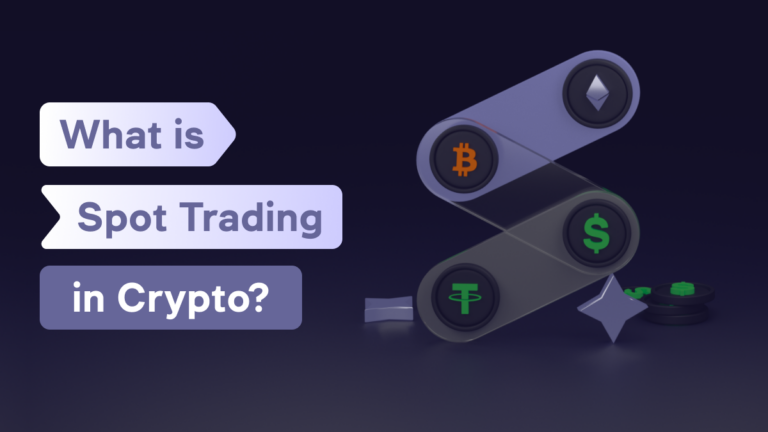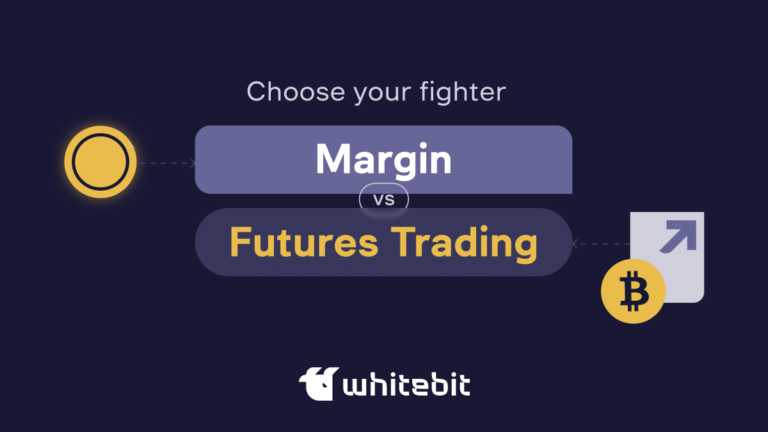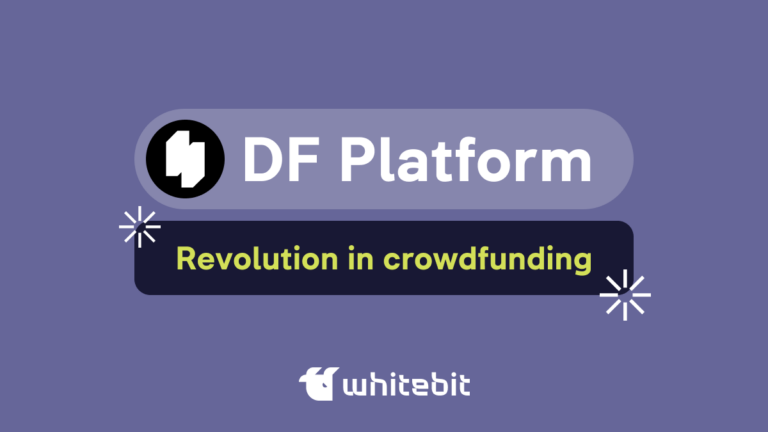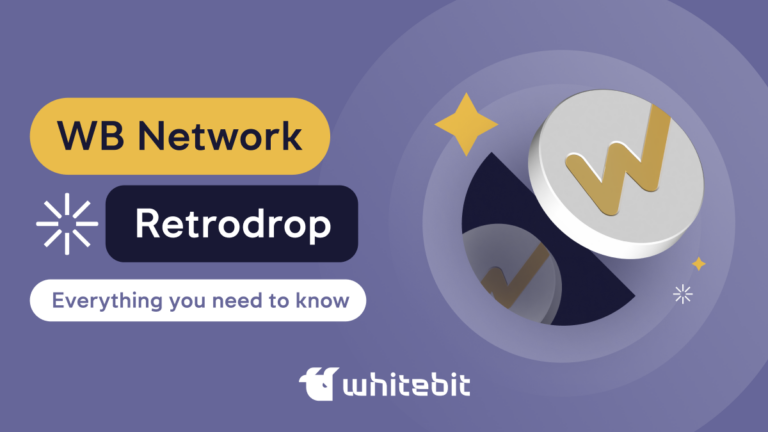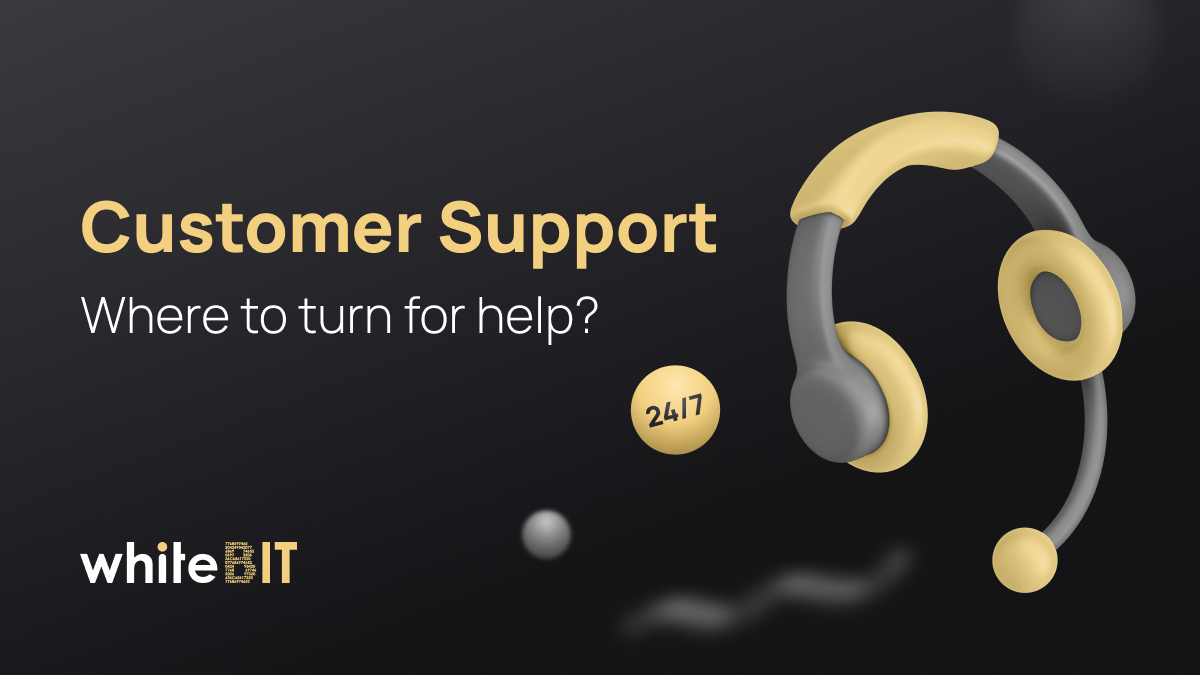What is Crypto Margin Trading and How Does It Work?
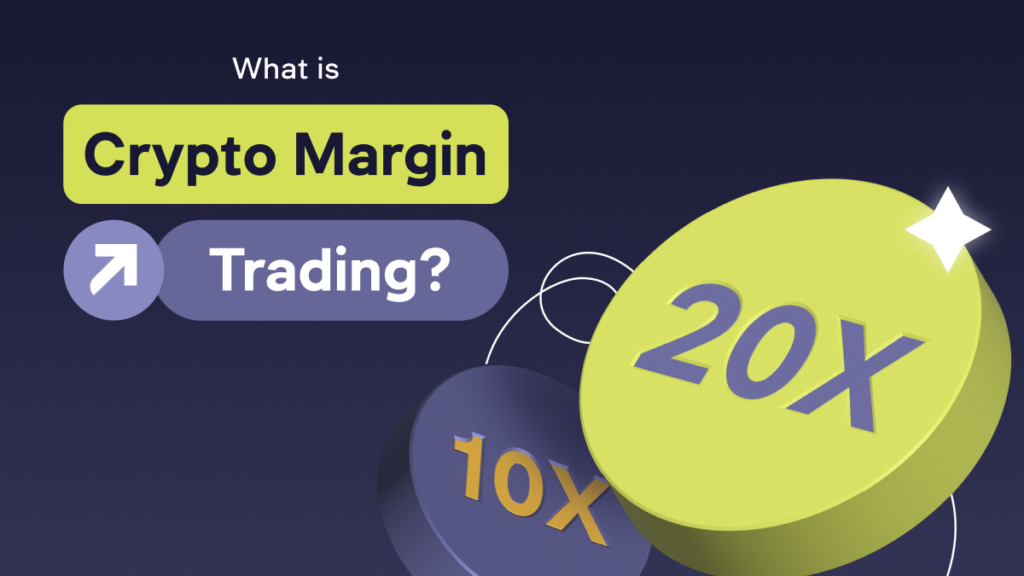
Content
Recently, the digital asset industry has been actively adapting the experience of traditional markets and providing users with various tools to implement trading strategies. Among these instruments are those that allow you to trade using borrowed funds, which can increase your potential profit. However, the use of borrowed funds also brings significant risks. Let’s look at why traders value leverage so much, what margin trading is, and why we often hear about liquidations in the market.
What is Margin Trading Crypto?
Margin trading of cryptocurrencies or Margin Trading is a tool that allows you to trade using borrowed funds, which helps increase possible profits.
In margin trading, a trader can use financial “leverage” to trade amounts that exceed their equity. The basic idea of margin trading is that the trader can profit from the rise in the asset price and its fall. This approach allows traders to make transactions on the market, even with a small amount of their funds.
What is Leverage?
Leverage is an opportunity to get a loan from a cryptocurrency exchange for trading transactions. It determines the ratio between the trader’s capital and the available loan amount. With the help of leverage, a trader can increase the volume of his transactions several times.
It is important to note that leveraged cryptocurrency trading is a high-risk strategy, as it can lead to significant losses. The use of “leverage” increases both possible profit and possible losses. Therefore, traders must carefully study the market and their opportunities before making margin trades.
How Does Crypto Margin Trading Work?
Imagine, you have your funds in the amount of 1000 USDT and this is equal to 1 BTC. Using 5x leverage, you can increase your available trading funds by 5 times your equity, which is 5000 USDT.
So, the total trading funds available with 5x leverage is 5000 USDT or 5 BTC. This amount is divided as follows: 1000 USDT is equity and 4000 USDT is a loan.
Suppose that Bitcoin price increased by 10%. In this case, 1 BTC will cost 1100 USDT. If you decide to sell the entire position at this price, you will have a profit of 500 USDT (5000 USDT + 10% = 5500 USDT, of which 1000 USDT is yours, 4000 USDT is returned by the exchange, and 500 USDT, which is roughly equal to 0.454 BTC, will be profit). As a result, your balance will be 1000 USDT + 500 USDT profit = 1500 USDT.
Otherwise, if the price of BTC drops by 5%, 1 BTC will cost 950 USDT and the total value of 5 BTC will be 4750 USDT (950 USDT * 5 BTC = 4750 USDT). If you decide to sell the entire position at this price, you will incur a loss of 250 USDT (5000 USDT – 5% = 4750 USDT, of which 750 USDT is your funds, 4000 USDT is the loan, so the loss is 250 USDT).
It is important to note that this is only an example, and commissions for opening and closing positions and using borrowed funds should also be considered.
What Do “Long” and “Short” Positions Mean?
The basic principle of margin trading is that a trader can profit from the movement of asset prices, whether they rise or fall.
Long positions are opened to profit from the increase in the asset’s value. This is one of the most common strategies in trading, where the trader hopes that the asset’s price will rise and he can make a profit by selling it at a higher price.
In the case of short positions, the trader borrows the asset and sells it in the open market at the current price. He hopes for a fall in the asset’s price, buys it at a lower price than he sold it, and repays the debt with interest. The difference between the selling and buying prices is the trader’s profit. Otherwise, if prices rise, the investor may suffer a loss.
Advantages and Risks of Margin Trading
Margin trading crypto, like other trading methods, has advantages and risks. Let’s look at them in more detail.
Advantages of Margin Trading:
- Using “Leverages”. This feature allows traders to execute trades exceeding their funds, increasing potential profits.
- Various Strategies. Margin trading allows traders to use different strategies, including “short” and “long” trades. This opens up new profit opportunities regardless of the market’s direction.
- Opportunity to Earn When Prices Fall. A trader can earn not only on the rise of prices but also on their fall, using the mechanisms of short sales.
Risks of Margin Trading:
- Big Losses. Financial leverage can increase both potential profits and potential losses. A trader can lose more than he invested and get into debt.
- Increased Risk of Failure. Margin trading requires a trader to pay more attention to the crypto charts and risk management. Failure to adequately assess risks can lead to severe financial losses.
- Liquidation Risk. If the value of the assets used for margin falls below a certain level, the broker can demand additional funds from the trader or forcefully close the position.
How to Margin Trade Crypto on the Exchange?
Margin trading on the stock exchange involves several steps and will depend on the specifics of the stock exchange. But here’s an overview of the process:
- Account Registration on the Stock Exchange. Choose a reliable and regulated platform to secure your funds. Registration may also require user verification and enabling of all necessary security measures for the account.
- Topping Up of the Balance. After creating an account, you need to deposit funds to your balance. It can be a cryptocurrency or a national currency, depending on the rules of the particular exchange.
- Choosing Pair and “Leverage”. When selecting a pair for trading, pay attention to crypto prices, their graphs, volatility, and other parameters. This will help to pick a pair for trading. It is also important to choose the “leverage”, considering not only the potential income but also the potential risks.
- Risk Management. You can use Stop-Loss and Take-Profit for risk management. These “protective orders” will automatically close trades when a specific price is reached and keep your crypto portfolio from possible losses.
- Creating an Order. After setting all the parameters, you can make margin contracts by choosing the “leverage” and the amount.
- Observation of Positions. After creating an order, you should carefully monitor the market and positions. You can use charts, technical analysis figures, etc.
- Closing Positions. This is the last stage of margin trading. If you set a limit, positions will be closed automatically. Or you can do it manually.
Crypto Margin Trading Strategies
There are several strategies on how to trade cryptocurrency with “leverage” that traders use to improve their results. Here are some such strategies:
- Stop-Loss and Take-Profit. As we said, these are names for special orders that are used to close positions when the price reaches a certain level automatically. Stop-Loss helps limit possible losses, and Take-Profit allows you to profit when the price reaches a certain level.
- Scaling. This strategy involves gradually opening new positions when certain price levels are established. For example, a trader can open new positions at each specific price deviation from the previous entry point.
- Scalping. This is a short-term strategy in which the trader makes many quick trades to make small profits from small price changes. Short trading intervals and high-frequency trading are used for this.
- Pair Trade. This crypto margin trading strategy consists of trading two correlated assets simultaneously. A trader looks for differences in the prices of two assets and enters into agreements to buy one asset and sell another to profit from the increase in the price difference.
- Trend Strategy. This strategy is used to trade in the direction of the current market trend. The trader looks for confirmation of the trend through technical analysis and enters into trades in the direction of the trend to profit from further price movement.
These strategies can be used individually or in combination depending on the trader’s market conditions, objectives, and trading style. It is important to carefully consider each strategy and adapt it to your needs and circumstances.
Common Pitfalls and How to Avoid Them
Margin crypto trading involves significant risks. When trading with “leverage” you risk liquidating positions due to a lack of funds or a significant loss. After all, by increasing the amount of the order several times, you also increase the risks. So, there is always a chance not only to lose your funds, but also to get a debt.
Here are some ways to avoid pitfalls:
- Start With Small Sums. Even if there is a desire to trade with the “leverage” the entire amount on the balance sheet, it is better to start with a smaller one and check your strategy.
- Don’t Go All-in Right Away. It is better not to use the largest leverage and a large amount at once, so as not to risk losing the entire balance in the negative.
- Do Not Neglect Volatility. Please remember that cryptocurrency assets are pretty volatile and the price can change significantly quickly, so follow the charts.
A trader needs to be careful and carefully plan his trading operations. Use risk management strategies that will help protect capital and always be prepared for unpredictable situations in the market.
Types of Margin Trading Cryptocurrency
- Trading on the Exchange. This type of margin trading involves using borrowed funds from the exchange to conclude transactions with “leverage”. This is a classic trading crypto on margin.
- Trading Using Derivatives. Some exchanges offer trading in cryptocurrency derivatives such as futures, options, or Contracts for Difference (CFDs). These tools allow traders to enter into contracts to buy or sell cryptocurrencies without owning the assets. Such trading can also use margins to increase potential profit or risk.
- Trade With a Loan. Some exchanges and platforms offer the possibility to use extra borrowed funds for margin trading. This allows traders to increase their positions in the cryptocurrency market.
These types of cryptocurrency margin trading provide traders with different opportunities and are suitable for various trading strategies and goals. It is important to carefully study each of them and choose the one that best suits your needs and risks.
Tips for Trading Bitcoin and Other Crypto on Margin
Because of the high-risk and potential reward, Bitcoin margin trading requires a cautious approach. Here are some tips that can become useful:
- Assess the risks. Before trading with a “leverage” study all the risks. You should understand that the liquidation of the position can lead to significant financial losses, even if you use protective mechanisms.
- Trade with minimal leverage. Use only the margin level you can afford to lose without negative consequences for your capital.
- Create a risk management plan. Develop a risk management strategy and stick to it. Set the max loss lever per trade and stick to it.
- Only risk what your balance sheet can handle. Don’t invest more in trades than you can afford to lose. Calculate the risk relative to the total capital and limit each trade to a reasonable size.
- Follow the market and news. Stay current with the latest news and events that may affect cryptocurrency prices. This will help you make informed decisions about making deals.
Trading Crypto on Margin With WhiteBIT
WhiteBIT crypto exchange has its characteristics in crypto margin trading:
- Flexible leverage that can range from 1x to 10x.
- Low commissions. The commission for using borrowed funds depends on the indicator of credit leverage and is 0.0585%. In addition, WBT owners can get a discount on the maker’s commission up to 100%.
- You can use assets from the “Collateral” balance, which allows you to expand the range of assets. However, the marginal weight should be considered.
- A fee for using borrowed funds is charged only if the order is at least partially executed, which helps avoid unnecessary costs.
- It is possible to create an OCO (One Cancels the Other) order, which provides additional flexibility in position management.
Conclusion
Trading crypto on margin opens wide opportunities for crypto traders. It allows you to increase the potential profit by using borrowed funds and protect the portfolio with the help of various risk management tools. However, it is essential to remember that margin trading comes with significant risks. Improper use of this type of trading can lead to severe financial losses. Therefore, you should carefully evaluate your experience level, market understanding and financial capabilities. Traders are advised to plan their trades carefully, use risk management strategies, and stay within their comfort zone.
FAQ
Margin crypto trading involves significant risks, mainly due to the volatility of cryptocurrencies. By trading with “leverage” you can increase your balance, lose funds, and get into debt.
It depends on the types of offers on a particular exchange and the pairs allowed for cryptocurrency margin trading. On WhiteBIT you can trade bitcoin using margin.
A Margin Call is a warning from the exchange that the position may be liquidated due to insufficient margin on the balance sheet. When the margin level falls below a certain threshold, the exchange may request additional funds to replenish the margin or reduce the risk of losses.
The liquidation price is the price of the asset at which the position will be automatically liquidated by the exchange. This happens when the level of margin on the account falls below the minimum threshold necessary to maintain open positions.
Spot trading and margin trading are two different types of trading. Spot trading involves the actual purchase or sale of an asset at the current market price, while margin crypto trading allows the trader to use borrowed funds to enter into trades. In spot trading, the trader owns the asset, while in margin trading, the trader does not.

